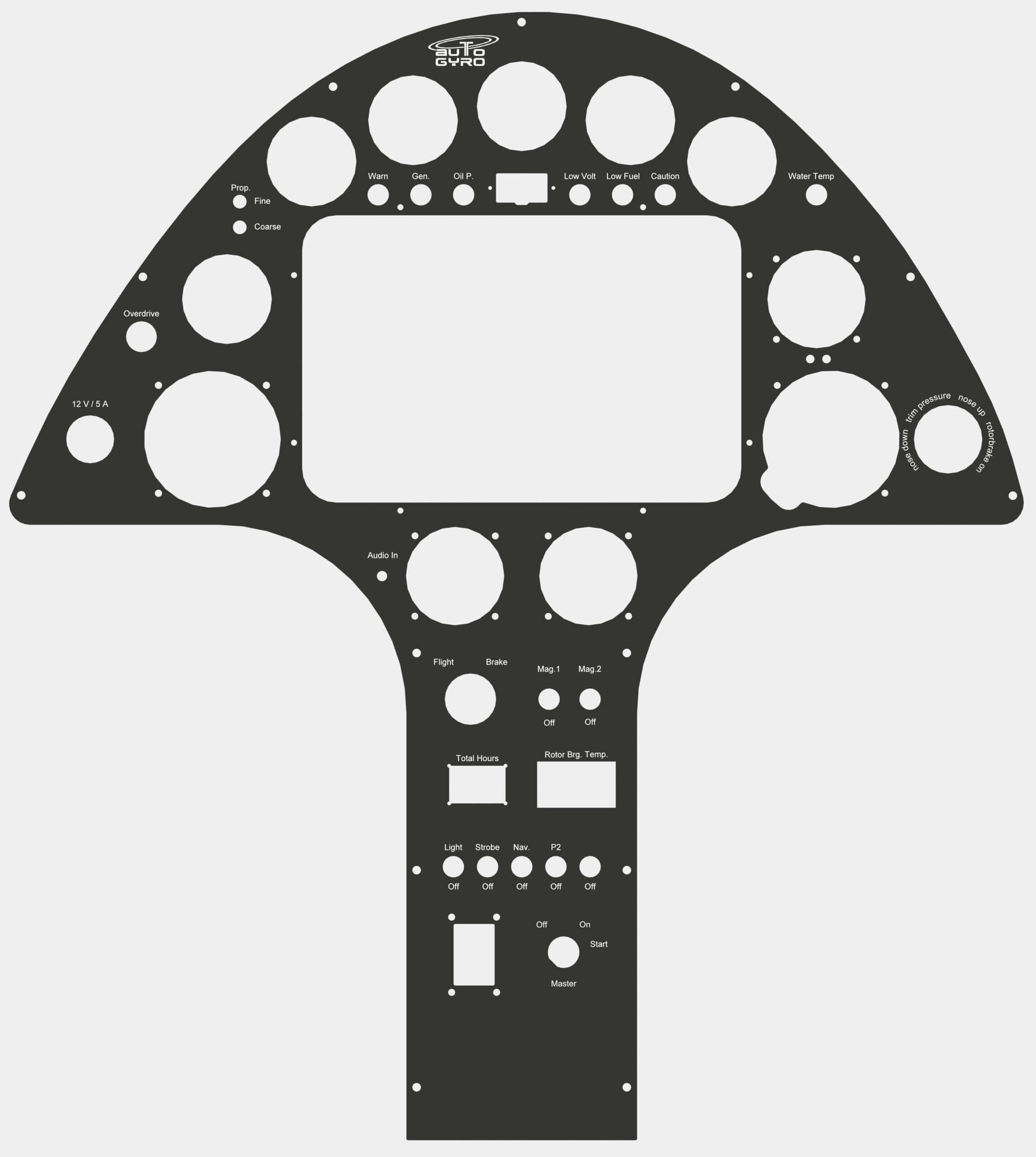MTOagric/terminator
Proven technology is the basis for the MTOagric/terminator. The integration of off-the-shelf solutions together with the proven MTOsport 2017 aircraft assures a smooth and reliable working system.
AutoGyro engineered the rugged ‘Agric’ version in about 2016, developed this into the more advanced 2017 model, and then to the ‘terminator’ version in 2021.
The ‘Agric’ is built on the AutoGyro platform concept by fitting the MTOsport with a full pesticide delivery system mounted on the rear seat frame, releasing pesticide via a 10m boom system. An engine-driven pump ensures a reliable delivery at just the right pressure and flow rate, and in just the right geospatial position when twinned with the AgNav system.
The ‘terminator’ is a ‘hardened’ version of the ‘Agric’ designed to handle the challenges of spraying large insect infestations, such as locusts. It is a tough machine, built to withstand the associated hazards of flying within a swarm.
Included is an onboard pilot clean-air breathing system. a hardened windscreen. backup and redundant flight instrumentation and hardened air intakes, engine cooling systems, and other features. Pilot safety is our paramount interest.
What is the benefit of using a gyroplane? Pesticides are expensive, so the correct application is key:
A fixed-wing aircraft is about 60% efficient in delivery due to the delivery height and speed. But can cover large areas.
A helicopter is about 85% efficient due to the lower delivery height, but uncontrolled dispersal due to rotor downwash. A helicopter is also fuel-hungry and can be an expensive operation.
A gyroplane is about 95% efficient because it has no rotor downwash, flies slowly, and delivers the spray in the right spray density where needed. A short field landing area provides easy and fast access to a pesticide replenishment point. An appropriate sensor array used during the initial crop survey enables utilizing the collected data for precise spraying in the corresponding areas.
Gyroplanes are ideal for targeted spraying where spray accuracy is key, and the optional Agnav system takes care of the dosing in flight – and precisely adjusts the spraying to your speed and position. The MTOagric can spray quantities ranging from 1 to 40 liters per hectare.
Targeted spraying also includes specific pests such as locusts, where limited pesticide is required, and accurate delivery is essential. Perfect work for the MTOterminator.
A gyroplane delivers precisely targeted delivery at low operational cost. They do not necessarily replace helicopters or fixed-wing spray aircraft; gyroplanes operate alongside these alternative delivery systems depending on the task requirements.
Main application areas:
- Crop spraying on the highly precisely defined area.
- Precise pesticide dosing based on the GPS intelligent link to the spray control.
- Hardened version for use in Locust control, utilizing special equipment for flight within locust swarms.
- It is possible to fit floats to enable over-water or swamp operations (e.g., mosquito control).
Enjoy the difference
- Proven technology with over 2000 MTOsports operational worldwide
- Huge load carrying capability, payload up to 300kg depending on the configuration
- Massive range with 96-liter fuel tank
- Adjustable pedals and seat position
- Adjustable lumbar support and heated seat option
- Multiple integrated on board safety systems
- Fully automatic constant speed propeller management, where fitted
- Very low noise generation
- ‘Lean burn’ fuel management leaving a green footprint
- State-of-the-art AgNav system for precision-controlled spraying
- 200-liter pesticide tank
- 10m spray width
- Fully adjustable spray system to cope with different pesticide formulations
- Large Tundra tyres
- Fast ‘hot-fill’ pesticide system
- Engine-driven pump system
Technical Specifications
| Technical Details | Model Details |
|---|---|
|
L x W x H (exclude rotor) | |
|
Rotor length |
8.6 m | 8.8 m (27.95 ft | 28.6 ft)
|
|
Empty weight |
340 kg (750 lbs)
|
|
MTOM (Max. Take-Off Mass) |
560 to 650 kg (1235 to 1433 lbs)
|
|
Engine |
Rotax 912 ULS | 914 iS | 915 iS | 916 iS
|
|
Take-off distance |
70 to 110 m (230 to 361 ft)
|
|
Take-off distance, to clear 15 m (45 ft) obstacle |
250 to 260 m (820 to 850 ft)
|
|
Climb rate: |
Up to 6.0 m/s (1170 fpm)
|
|
Max. endurance |
Up to 4.5 hours
|
|
Max. range |
Up to 550 km (330 miles)
|
|
Cruise speed |
120 km/h (75 mph)
|
|
Fuel capacity |
65 to 96 L (17 to 25 US gallons)
|
|
Comply with |
BUT (Germany), Section T (UK), ASRA (Australia), US Primary Category, USA Experimental Category & CCAR-21 (China). However, the carriage of goods or people and associated requirements vary by country, consult with your responsible aviation authority.
|
Technical data can vary regarding country-specific legal requirements
*2: typical aircraft configuration, 1 pilot (80kg), 40 ltr fuel, 2000 ft MSL
*3: typical aircraft configuration, 1 pilot (80kg), max fuel, 2000 ft MSL




 English
English German
German